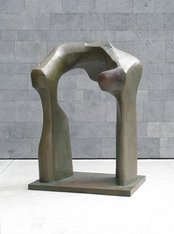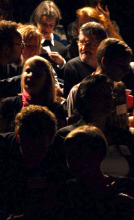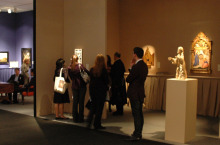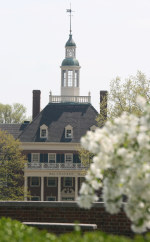The museum world gets bigger this week, with the opening next Saturday of the Art Institute of Chicago’s Modern Wing, a 264,000 sq. ft. structure set to hold the museum’s 20th and 21st Century collections, and the opening this past Sunday of a rooftop sculpture garden at
 the San Francisco Museum of Modern Art. Sitting on top of an parking garage, it includes an indoor glass pavilion gallery and two outdoor spaces. Among the works on view are Henry Moore’s Large Torso Arch (right). And I can just imagine the dramatic cityscape view from this fifth-floor space.
the San Francisco Museum of Modern Art. Sitting on top of an parking garage, it includes an indoor glass pavilion gallery and two outdoor spaces. Among the works on view are Henry Moore’s Large Torso Arch (right). And I can just imagine the dramatic cityscape view from this fifth-floor space.
The Art Institute’s Modern wing includes the Bluhm Family Terrace, with 3,400 sq. ft. of outdoor exhibition space, though I doubt the view can compare.
I’m surprised that, during the past decade of museum expansions, there haven’t been more rooftop galleries.
[Read more…] about Every museum has a roof. Why so few galleries there?





